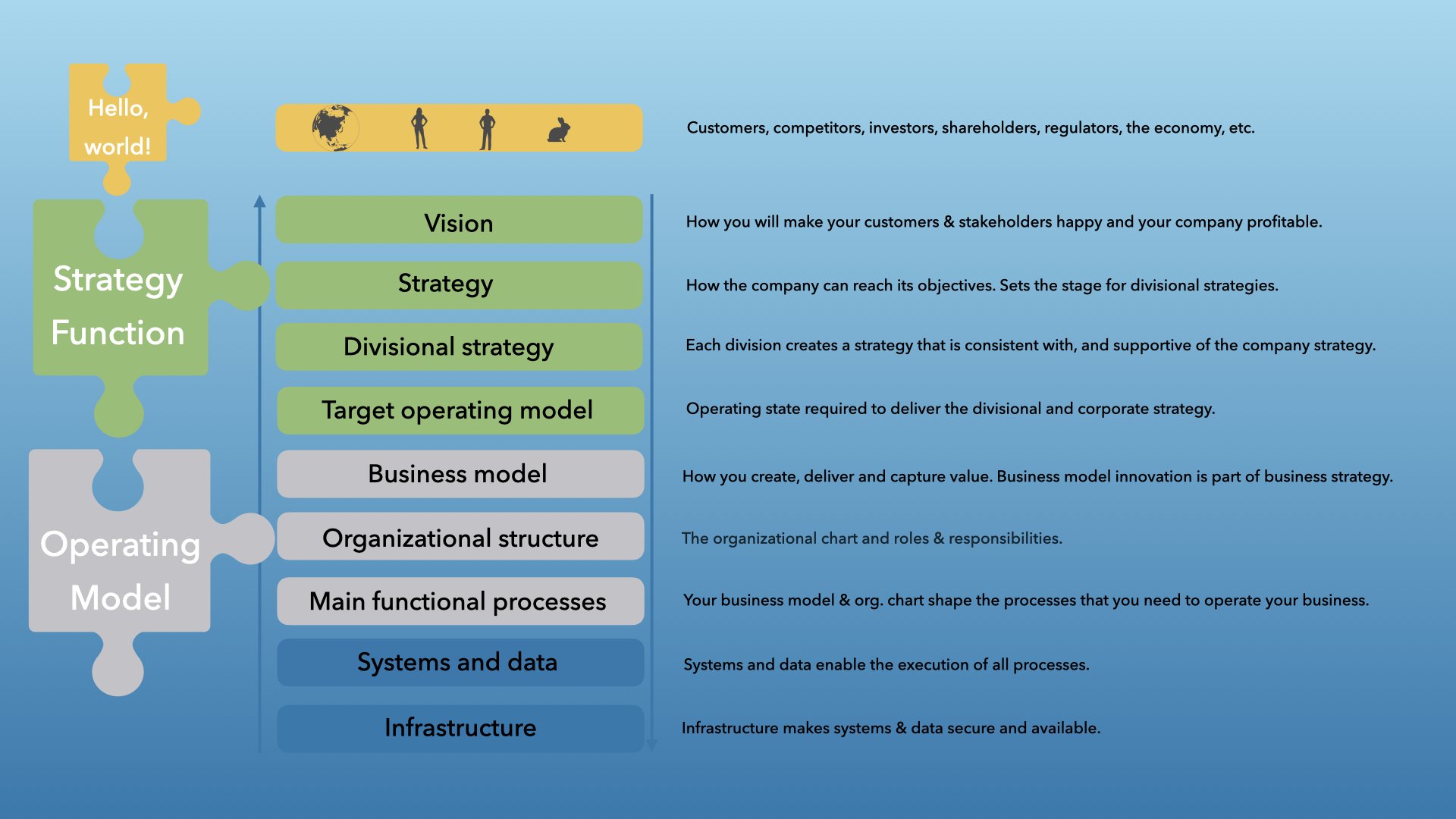Business Model
A business model is how a company creates, delivers and captures value. Once a company defines and adopts a business model, it becomes a part of its operating model (please see the diagram below). Let’s take banking as an example. A few hundred years ago, bankers in Venice did not have bank branches. Banking existed, but the business model was much different from what we experienced at the end of the 20th century.
When a business model is no longer viable or profitable, the most adaptable companies innovate. As it applies to a business model, they find a better way create, deliver and capture value. The process of business value innovation sits at the Strategy level. Once the company completely adopts a new business model, it becomes a part of its operating model.
Let’s continue with our banking example. Neobanks figured out that most of their clients want banking services delivered a phone, and maybe online. There are studies that show the majority of millennials would rather see a dentist than go into a bank branch. Twenty years ago, banks were asking their customers whether they wanted to speak with a teller or use an ATM. Innovation in FinTech proceeds at a fast pace.
“A new business model, including becoming an agile enterprise, will impact both your strategy and your operating model. Agile enterprises achieve this realignment faster, cheaper and with less pain.”
— AlphaMille

